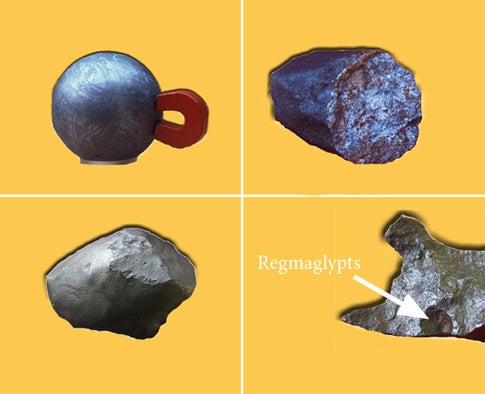Some meteorites may not exhibit any of these major traits. For example, a stone meteorite weathered by conditions on Earth might not show a fusion crust, aerodynamic shaping, or regmaglypts. And certain types of stone meteorites contain no metal. The more major traits the rock displays, the greater the likelihood it’s a genuine meteorite.
Scientists classify meteorites into three categories: irons, stones, and stony irons. Because most meteorites are magnetic, magnetism is always the first test. If the suspect is not magnetic, it is almost always a “meteorwrong.” Researchers and collectors quickly learn how to identify an Earth rock from a meteorite because what may be represented as a rare stone meteorite and priced at $200 a gram could turn out to be just an expensive meteorwrong.
Beyond the four visual recognition clues, we can use a simple chemical test for nickel, which is found in high quantities in metal meteorites when compared to terrestrial rocks. By testing for nickel, we can almost always confirm if the suspect is meteoritic. Researchers and collectors may do additional chemical analysis if they think a sample is meteoritic but it does not test positive for nickel.
Sometimes, one must look at the suspect’s interior to get a better idea of its origin. Slicing a sample takes a special saw and blade.
While most suspected meteorites turn out to be imposters, occasionally you will find a meteorite. Study specimens at your local museum or college, and read as much as you can on the subject. If possible, buy a few meteorites to study. And, oh yes, buy a magnet. — MIKE REYNOLDS, FLORIDA COMMUNITY COLLEGE, JACKSONVILLE










